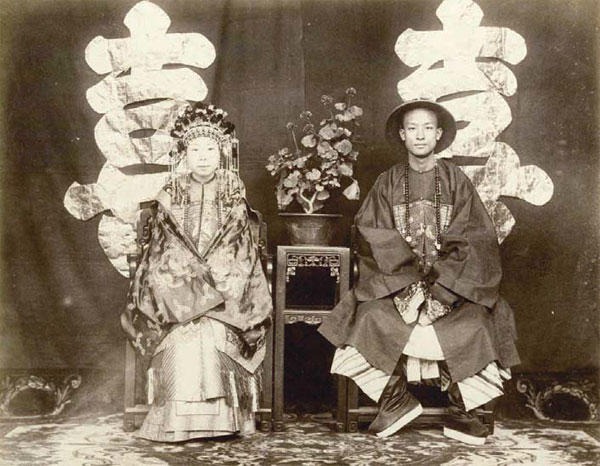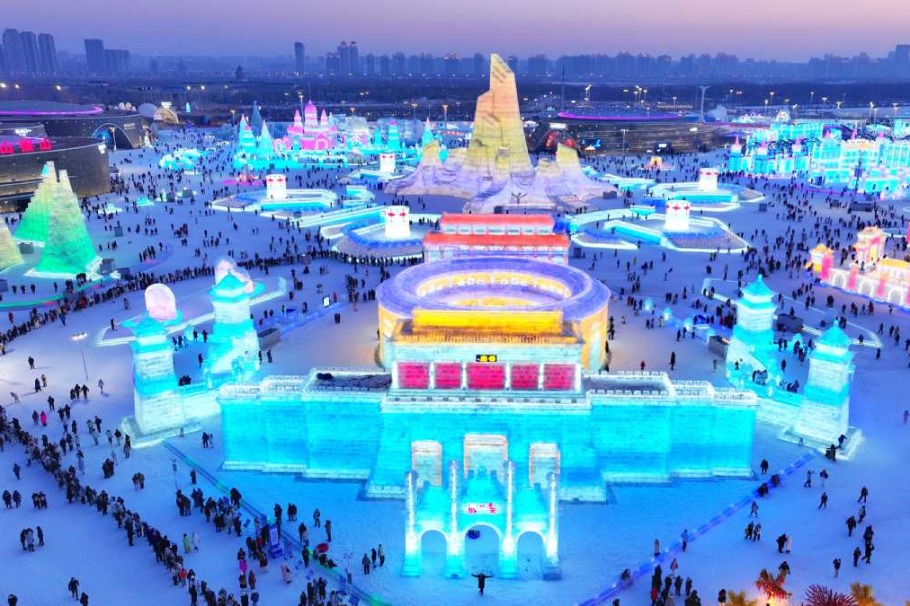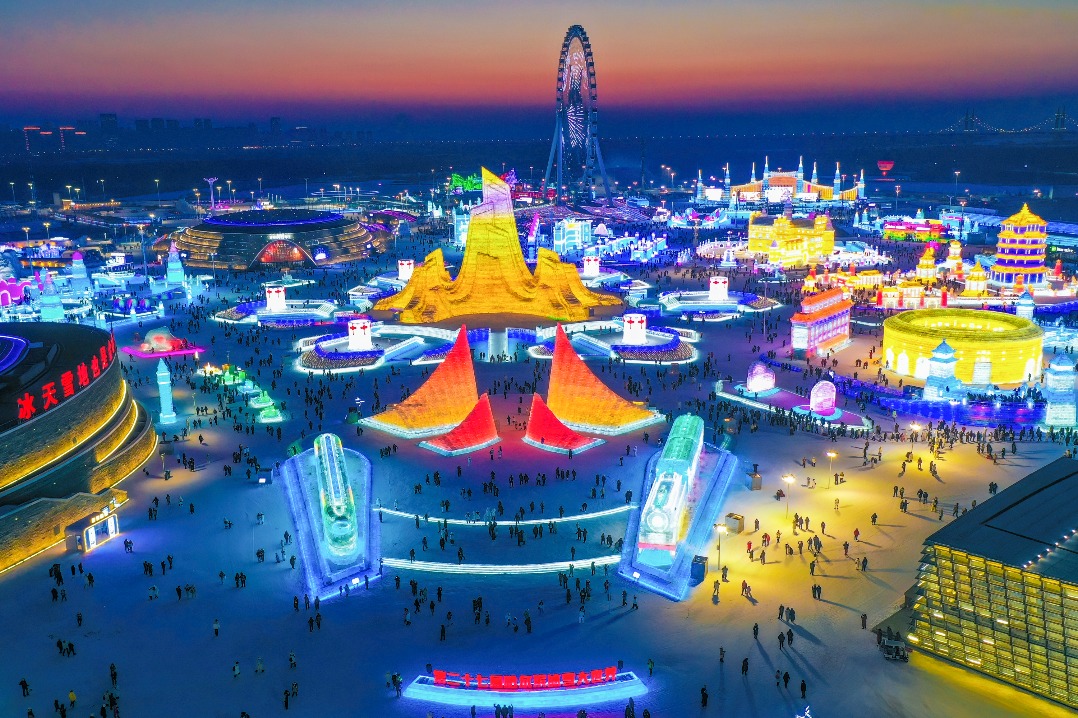Taking a trip back to early Shanghai

After an exhibit of rare photos of 19th-century Beijing, Londoners will get to travel through time to the emergence of the Pearl of the Orient
When New York-based Raymond Watt came across an article on the BBC news website about a Chinese photography exhibition in the United Kingdom in November, he was shocked, to say the least.
The story about a collection of rare photographs of Beijing from the late 1800s, on show in London's Chinatown, included a number of images from the exhibit - one of which set Watt back on his heels.
| Collector Stephan Loewentheil's latest exhibition will feature a rare collection of prints in London in November, displaying images of Shanghai by William Saunders. Photos Provided to China Daily |
| Loewentheil showcased Thomas Child's images of life in Beijing during the Qing Dynasty last year. |
"It was a picture I had never seen before, and my instinct told me that the subjects could be my great-grandparents," he tells China Daily.
The article explained how British photographer, Thomas Child, who had moved to China as an engineer, captured marriage ceremonies during the late Qing Dynasty (1644-1911).
It detailed how one particular photograph in the series depicted the daughter of the famous Chinese statesman, Zeng Guofan.
"My great-great-grandfather was Zeng Guofan," Watt says.
The 79-year-old never expected when he was browsing the internet that day that he would uncover a piece of family history dating back some 140 years, not to mention in an exhibition some 5,600 kilometers from where he lived.
According to Watt, the wedding photograph documents the start of the prominent Nie family in China.
"The family rose in importance in Shanghai from the late Qing Dynasty into the 20th century and went through more than 70 years of ups and downs until the 1950," he says. "The groom, Nie Jigui, served as Shanghai's governor from 1890 to 1893. He died in 1911 and was buried in Hunan, while the bride, Zeng Jifen, died in 1942 and was buried in Shanghai."
The display of Child's work at the China Exchange, an organization in London, was the first time the US-based collector who owns the photos, Stephan Loewentheil, had shared the original images of life during the Qing Dynasty in Beijing.
While Watt's reaction was by far the most compelling, the exhibition in Soho's Gerrard Street attracted worldwide attention, making headlines in Europe, the United States and China.
"The success of the show reflected the increasing global interest in China's people and culture, as well as the interest of the people of China in preserving and studying their own history," says Loewentheil, whose Historical Photography of China Collection is the largest holding of late Qing photographs in private hands.
"Today, Beijing is a vastly different place and the early photographs presented a perspective on the city that had never been previously available," he says.
Building on the success of the Qing Dynasty Peking Exhibition, Loewentheil will showcase another rare collection of prints in London in November - this time, displaying images of Shanghai.
The latest exhibition is the first devoted to the work of William Saunders, who, similarly to Child, was a British engineer who became a photographer after traveling to China in 1860. He is recognized as one of the most important photographers of 19th-century China.
Saunders made his photographs - some of the earliest of the city and its people - at a critical time in Chinese history, just as Shanghai was emerging as an international commercial city.
"His photographs offer an intimate view of the diverse inhabitants of Shanghai and their traditional ways of life, as the city began to emerge as the global economic dynamo it has become today," Loewentheil says.
"This unprecedented photographic exhibition provides a rare opportunity to see Shanghai and its people as they were at the historical moment before the epochal transformations of the 20th century."
Of the few 19th-century British photographers who traveled to China, only Saunders set up a professional photographic studio in Shanghai, which remained in business for over a quarter of a century, according to the exhibition's US-based curator, Stacey Lambrow.
"The early photographers who established studios in China generally stayed in the country for only a few years, whereas Saunders owned and operated the longest-running 19th-century photographic studio in Shanghai belonging to a Westerner," she says.
"As a photographer and businessman, Saunders had remarkable ambition - the sheer audacity of setting up his studio in Shanghai at that time was extraordinary."
Saunders was one of the first photographers to produce hand-colored photographs of the Far East, at a time when many Chinese artists were transitioning from painting to photography.
"Early photographers sought to convey an accurate representation of visual reality, and color was a crucial component," Lambrow says. "Saunders applied paint to accomplish this for his clients."
In mid-19th-century China, photography threatened the careers of the portrait and trade painters in the port cities.
Consequently, Chinese artisans adapted to keep their livelihoods - becoming photographers themselves or taking up jobs as colorists for established photographers like Saunders.
"The artists worked on wooden tables, and their supplies included brushes, ink stones, and porcelain bowls," Lambrow says.
"Coloring a photograph was a precise and time-consuming process - colorists typically produced no more than three finished prints a day."
The tinted prints, which became hugely popular among the well-to-do throughout the world, were ahead of their time, according to Lambrow. "There is no record of such prints having been seen before in Shanghai or anywhere else," she says.
The exhibition in November will include many hand-colored photographic prints from a portfolio Saunders created called Chinese Life and Character, in which he used genre art.
The style, which Saunders imported from Europe, is an artistic convention that transcends the limitations of a specific time and culture. The images portray types of people, occupations and trades and customs in Shanghai at the time.
"Only a handful of private collectors have assembled enough of Saunders' prints to support an exhibition devoted to his work," Lambrow says. "Now, Stephan Loewentheil has taken the initiative to launch this project."
The exhibition will be held at the China Exchange in London's Chinatown from Nov 3 to 11. "Last year's show connected Raymond Watt to his family history when he recognized his family members in a portrait - a historical exchange," says Freya Aitken-Turff, CEO of China Exchange. "I am very excited to see what sorts of exchanges take place this year."
For China Daily
(China Daily Africa Weekly 08/12/2016 page18)
Today's Top News
- Experts: Lai not freedom fighter, but a pawn of the West
- Hainan evolves as gateway to global markets
- Opening up a new bridge between China and world
- Tour gives China-Arab strategic trust a boost
- China accelerates push for autonomous driving
- Opening of new gateway can help foster global economic and trade cooperation
































